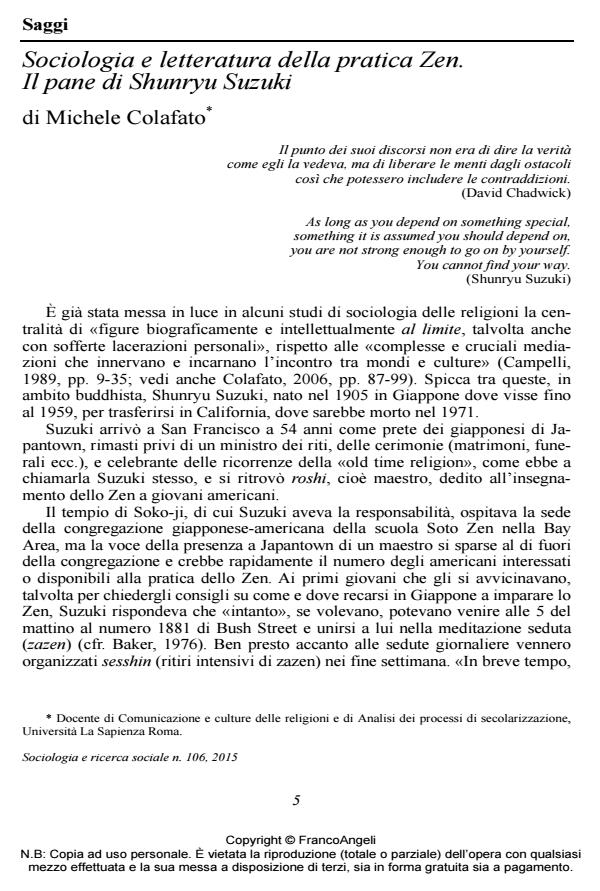Sociology and Literature of Zen Practice
Journal title SOCIOLOGIA E RICERCA SOCIALE
Author/s Michele Colafato
Publishing Year 2015 Issue 2015/106
Language Italian Pages 19 P. 5-33 File size 176 KB
DOI 10.3280/SR2015-106001
DOI is like a bar code for intellectual property: to have more infomation
click here
Below, you can see the article first page
If you want to buy this article in PDF format, you can do it, following the instructions to buy download credits

FrancoAngeli is member of Publishers International Linking Association, Inc (PILA), a not-for-profit association which run the CrossRef service enabling links to and from online scholarly content.
This article begins reminding the reader of the importance in Sociology of Religion of some of the leading figures, characterized by their being intellectually and biographically on the border between worlds and cultures, and by their acting as embodiments and mediators. One such figure, in Buddhism, is that of Shunryu Suzuki. Suzuki, soon renamed «Suzuki-roshi», is portrayed as loyal to the teaching of Master Dogen Zenji, the founder of Soto Zen school and, at the same time modern, eager to test the spirit of Zen in the middle of a «counterculture », made of pacifism, anti-war protest, over-indulgence, rebelliousness towards discipline and social rules. Suzuki’s proposal appears to be nonsectarian, open to discussion and dialogue, characterized by trust in an idea of religion as one extended to all aspects of every-day life, without hierarchies and preferences.
Michele Colafato, Sociologia e letteratura della pratica Zen. Il pane di Shunryu Suzuki in "SOCIOLOGIA E RICERCA SOCIALE " 106/2015, pp 5-33, DOI: 10.3280/SR2015-106001